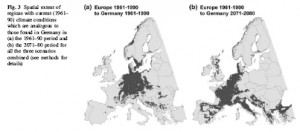![]() A group of over 20 biodiversity experts from a slew of international conservation agencies have a paper out in Science bemoaning the state of the biodiversity indicators agreed in 2006. 1 These indicators are important because they are supposed to be used to track progress towards fulfillment of the promise made by Parties under the Convention on Biological Diversity to reduce the rate of biodiversity loss by 2010. They have also been incorporated into the Millennium Development Goals.
A group of over 20 biodiversity experts from a slew of international conservation agencies have a paper out in Science bemoaning the state of the biodiversity indicators agreed in 2006. 1 These indicators are important because they are supposed to be used to track progress towards fulfillment of the promise made by Parties under the Convention on Biological Diversity to reduce the rate of biodiversity loss by 2010. They have also been incorporated into the Millennium Development Goals.
The authors point to problems with the “availability, consistency, and relevance” of data on even the indicators that are reasonably well-developed at the global scale. Some indicators — 5 of the 22 — “are not being developed at a global scale” at all, such as the one on access and benefit sharing. 2 The next Conference of the Parties of the CBD (which meets in Japan in October 2010) “will review progress and agree on a new set of targets and a revised indicator framework.”
I hope one of the things it will consider in the new set of targets is crop genetic erosion. There are currently two indicators under the “Trends in genetic erosion” rubric, covering ex situ crop collections and livestock diversity respectively. Here’s what the indicators website has to say about the ex situ collections indicator:
Currently, studies are being undertaken to measure the dynamics of genetic diversity of collections from selected genebanks (EURISCO, USDA, SINGER, ICRISAT and CIAT), in order to develop a model to be applied more systematically worldwide. Based on data from these sources, the evolution over time in quantitative and qualitative terms (number of species; number of accessions/species; geographic origin and distribution of newly added accession versus existing ones) of collected samples was investigated.
I’m ashamed to say I know no more about it than that, but will try to find out the latest. Or maybe someone out there can bring us up to date. Anyway, there is no indicator that I can see on trend of genetic diversity in farmers’ fields, although there is one on sustainable management of agroecosystems.
We all know this is a fraught subject, not least politically, and we should perhaps be grateful that there is anything at all on agrobiodiversity among the indicators 3, but we cannot go on quoting at best anecdotal, at worst dubious, figures on loss of crop diversity and expect to be taken seriously. To say, as the authors of the Science paper do, that
…indicators of genetic biodiversity are slowly being compiled for domesticated and cultivated varieties but not yet for wild relatives.
is frankly not hugely reassuring.
